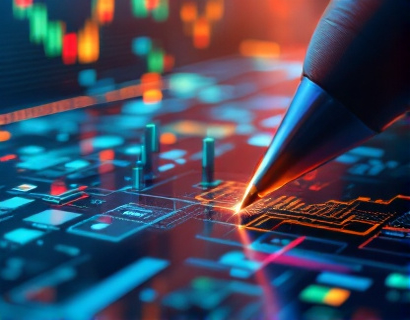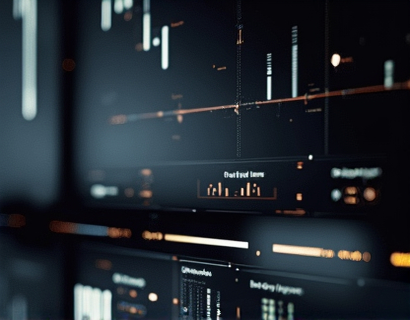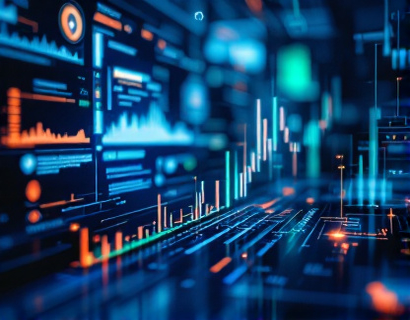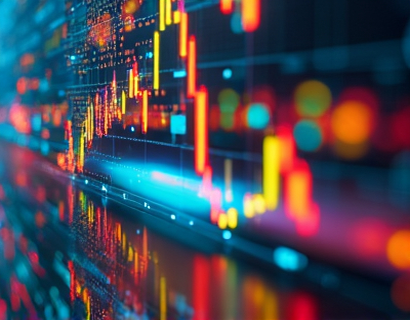Blockchain for Art: Revolutionizing the Preservation and Tracking of Historical Artifacts with Decentralized Solutions
Blockchain technology, originally designed for cryptocurrencies, has found a new and transformative application in the art and cultural heritage sector. This decentralized ledger system offers a secure, transparent, and immutable way to track the authenticity and provenance of historical artifacts and artworks. By leveraging blockchain, the art world is witnessing a revolution in how ownership is verified, history is recorded, and cultural assets are preserved for future generations.
The traditional methods of tracking art provenance are often fraught with challenges. Paper-based records are susceptible to loss, damage, or tampering, while digital records can be hacked or altered. Blockchain provides a robust solution by creating a tamper-proof and transparent ledger that records every transaction and ownership change since the creation of the artwork. This ensures that the history of an artifact is accurately and permanently documented, reducing the risk of forgeries and unauthorized transactions.
One of the key benefits of using blockchain in the art sector is the enhancement of trust among collectors, museums, and cultural institutions. Each participant in the art ecosystem can verify the authenticity and ownership history of an artwork with ease, fostering a more collaborative and transparent environment. This trust is crucial for the art market, where the value of an artwork is heavily dependent on its provenance and authenticity.
The implementation of blockchain in art preservation and tracking begins with the creation of a digital token or smart contract for each artwork. This token contains essential information such as the artwork's unique identifier, creator, date of creation, previous owners, and any relevant certificates of authenticity. When an artwork changes hands, the transaction is recorded on the blockchain, creating an unalterable chain of ownership.
For collectors, this means that they can purchase art with greater confidence, knowing that the history and authenticity of the piece are verifiable. Museums and cultural institutions can also benefit by using blockchain to manage their collections more efficiently. They can track the movement of artifacts, ensure compliance with international laws regarding cultural property, and provide detailed provenance information to the public.
Digital preservation is another area where blockchain shines. Traditional methods of preserving physical artifacts often involve storing documents and records in secure but limited-access locations. Blockchain offers a decentralized alternative where digital copies of these records are stored across a network of computers, ensuring that they are safe from physical damage and censorship. This not only preserves the historical context of artifacts but also makes this information accessible to a broader audience.
The use of smart contracts on the blockchain further enhances the efficiency of art transactions. Smart contracts are self-executing contracts with the terms of the agreement directly written into code. In the context of art, a smart contract can automatically execute the transfer of ownership once certain conditions are met, such as the payment being confirmed. This reduces the need for intermediaries, speeds up the transaction process, and minimizes the risk of disputes.
For cultural heritage institutions, blockchain can play a pivotal role in the global effort to protect and preserve historical artifacts. Many artifacts have complex and often contentious provenance, with histories of looting, illegal trade, and misattribution. Blockchain can help establish a clear and verifiable chain of custody, aiding in the repatriation of stolen or illicitly traded items. This technology can also assist in creating a global registry of cultural heritage, making it easier to monitor and protect artifacts from theft and damage.
The benefits of blockchain extend to the art market itself. By providing a transparent and secure platform for buying and selling art, blockchain can reduce fraud and increase market efficiency. Collectors can access a wider range of authenticated artworks, while artists and creators can receive fair compensation for their work. The reduced risk of forgeries also helps maintain the integrity of the art market, ensuring that buyers and sellers can transact with confidence.
However, the adoption of blockchain in the art sector is not without challenges. One of the primary hurdles is the technical complexity of the technology, which can be daunting for those unfamiliar with digital systems. Education and training are essential to help stakeholders understand and effectively use blockchain solutions. Additionally, the integration of blockchain with existing art management systems requires careful planning and collaboration among various players in the industry.
Another challenge is the scalability of blockchain networks. While blockchain offers many advantages, the current infrastructure may struggle to handle the high volume of transactions required in the art market. Solutions such as layer 2 protocols and sharding are being developed to address these scalability issues, but they are still in the experimental stage.
Despite these challenges, the potential benefits of blockchain in the art and cultural heritage sector are significant. By providing a secure, transparent, and decentralized way to manage art provenance and ownership, blockchain can help preserve our shared cultural heritage for future generations. It empowers collectors, museums, and cultural institutions to work together more effectively, ensuring that valuable artifacts are protected and appreciated for years to come.
As the art world continues to embrace blockchain technology, we can expect to see innovative applications and solutions emerge. From digital certificates of authenticity to decentralized marketplaces, the future of art preservation and tracking is being redefined by this transformative technology. The journey towards a more secure and transparent art ecosystem is just beginning, and blockchain is at the forefront of this revolution.






































